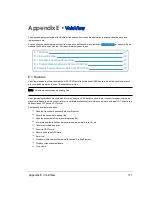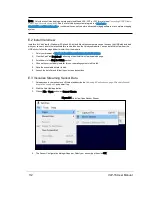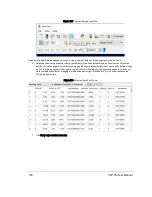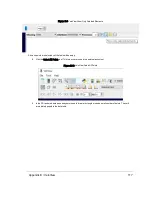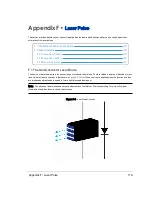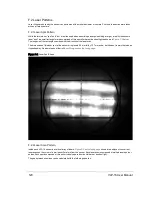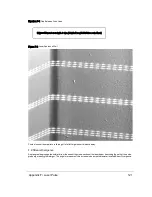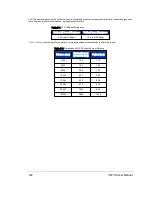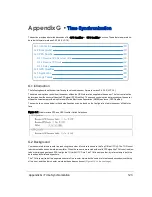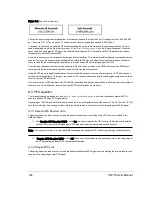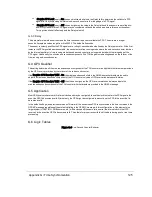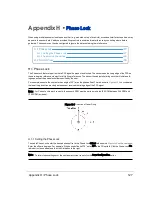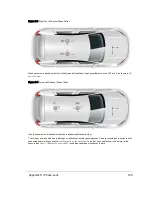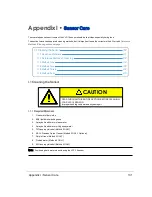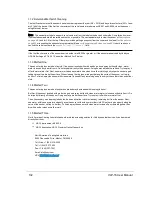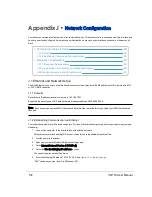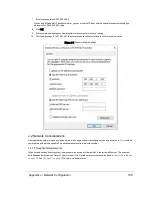
If Require PPS Lock is set to On the sensor utilizes the value in the Delay field to determine the validity of a PPS
signal prior to synchronizing its internal sub-second counter to the rising edge of a PPS signal.
If Require PPS Lock is set to Off the sensor ignores the value in the Delay field and the sensor uses a rolling win-
dow of 2 cycles before the PPS signal may be considered valid and then used as a time reference by the sensor.
Turning this option off effectively sets the Delay value to 2.
G.3.3 Delay
This parameter allows the user to extend the time the sensor requires to validate the PPS. The units are in integer
seconds. Acceptable values range from 0 to 65535. The default is 5 seconds.
The sensor constantly qualifies the PPS signal over a rolling N-second window defined by the Delay parameter. At the first
instance the PPS signal is deemed unstable, the sensor enters free-running mode where the sub-second counter is driven
by the internal oscillator. In free-running mode the sub-second counter is no longer adjusted with the rising edge of the
PPS signal. Additionally, the minutes and seconds component of the TOH begins incrementing based on the rollover of the
free-running sub-second counter.
G.4 GPS Qualifier
This setting determines if the minutes and seconds component of the TOH counter are adjusted to the timestamp provided
by the GPS receiver or driven by the rollover of the sub-second counter.
If the Require GPS Receiver Valid is On, the minutes and seconds field in the NMEA sentence timestamp is used to
adjust the minutes and seconds component of the TOH counter only when GPS receiver indicates a valid status.
If the Require GPS Receiver Valid is Off, then the sensor ignores the GPS receiver status and always adjusts the
minutes and seconds component of the TOH counter with the timestamp provided in the NMEA message.
G.5 Application
Most GPS receivers have low-drift internal clocks and may be configured to use this clock to maintain the PPS signal in the
event the GPS fix becomes invalid. Alternatively, the GPS might be configured to discontinue the PPS in the event the fix
becomes invalid.
In the default settings (and previous versions of firmware), the sensor uses PPS to synchronize to the time contained in the
GPRMC message regardless of the state of valid flag in the GPRMC message. In this configuration, all the elements in a
larger system (LiDAR, IMU, RGB cameras, etc.) will be clocked off the same time source (the internal clock in the GPS
receiver) in the event the GPS fix becomes invalid. This allows for proper reconciliation of the data during post- or real-time
processing.
G.6 Logic Tables
Figure G-3 Sub-Second Counter Behavior
Appendix G • Time Synchronization
125

